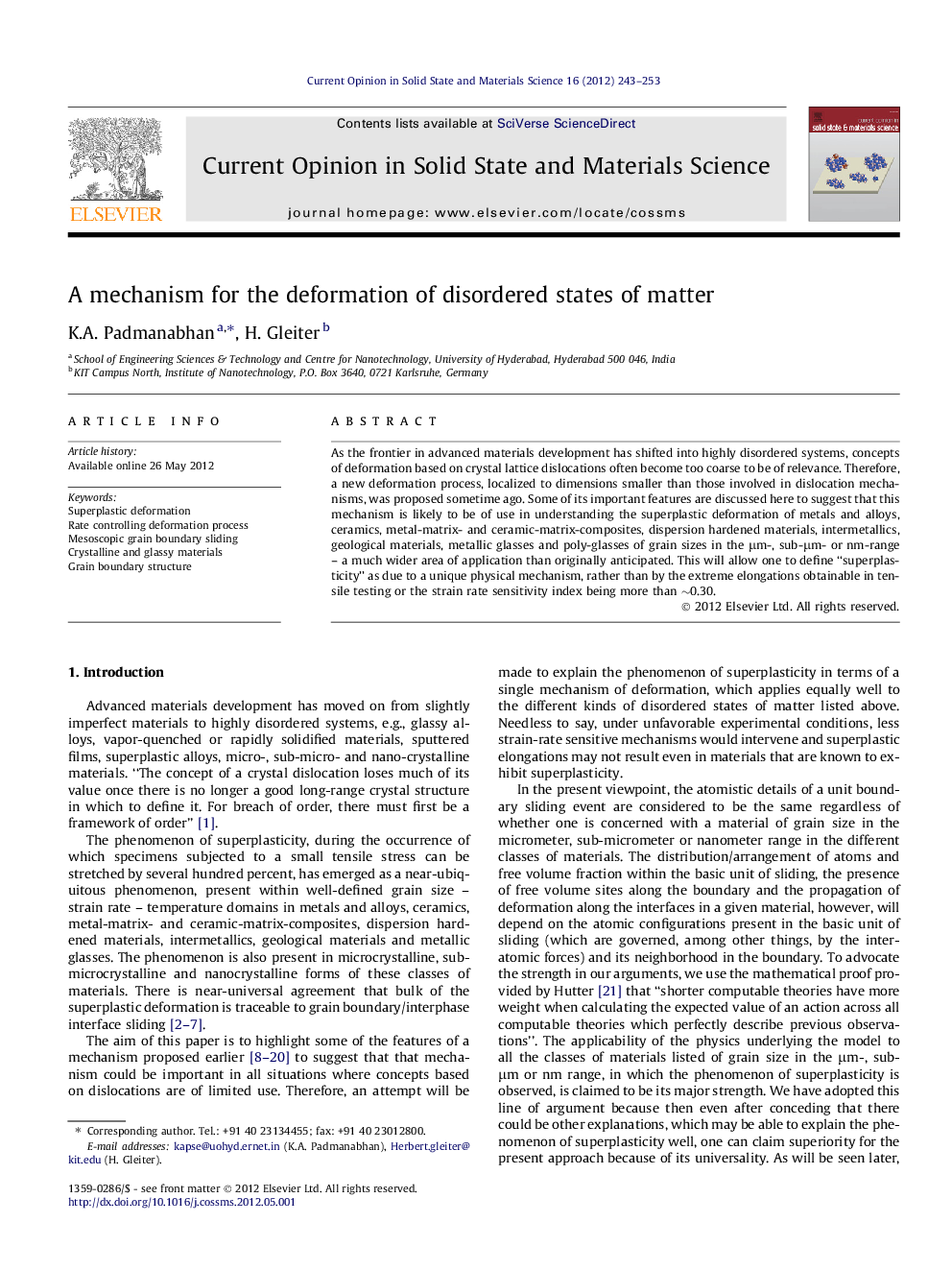| Article ID | Journal | Published Year | Pages | File Type |
|---|---|---|---|---|
| 1555603 | Current Opinion in Solid State and Materials Science | 2012 | 11 Pages |
As the frontier in advanced materials development has shifted into highly disordered systems, concepts of deformation based on crystal lattice dislocations often become too coarse to be of relevance. Therefore, a new deformation process, localized to dimensions smaller than those involved in dislocation mechanisms, was proposed sometime ago. Some of its important features are discussed here to suggest that this mechanism is likely to be of use in understanding the superplastic deformation of metals and alloys, ceramics, metal-matrix- and ceramic-matrix-composites, dispersion hardened materials, intermetallics, geological materials, metallic glasses and poly-glasses of grain sizes in the μm-, sub-μm- or nm-range – a much wider area of application than originally anticipated. This will allow one to define “superplasticity” as due to a unique physical mechanism, rather than by the extreme elongations obtainable in tensile testing or the strain rate sensitivity index being more than ∼0.30.
► Comparison between coincidence site lattice and structural unit models. ► Review an earlier proposal to show its relevance to all types of superplastic flow. ► Show that the assumptions are relevant to all kinds of superplasticity. ► Generalization of procedure to analyze all types of superplastic flow. ► Drawing conclusions on the areas of applicability of the analysis.
